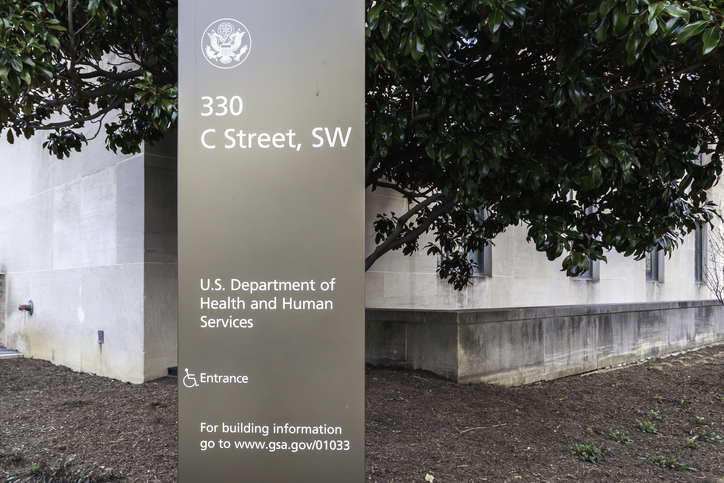The Trump administration signaled Medicare drug price negotiations under the Inflation Reduction Act (IRA) signed in 2022 by former President Joe Biden may undergo a reexamination to add greater transparency and possibly other reforms.
A 125-word news release on January 29, 2025, stated that lowering drug prices is a “top priority” for President Trump, who wants to “provide opportunities for stakeholders to provide specific ideas to improve the Negotiation Program, consistent with the goals of achieving greater value for beneficiaries and taxpayers and continuing to foster innovation.”
Trump met with drug company executives in a private meeting on February 20, and the group discussed the IRA, as well as tariffs and anti-trust regulations, according to BioSpace.
Drug Maker Ire of the IRA
Several drug makers have filed lawsuits to block the drug negotiation mandate under the IRA. A February 19 filing by the Trump administration agreed with the legal arguments used by the prior administration and with rulings made by lower courts.
Health and Human Services Secretary Robert Kennedy Jr. indicated in his confirmation hearing that he will comply with the law as it exists and support President Donald Trump’s position on prescription drug price negotiation.
In the final weeks of Biden’s administration, the Centers for Medicare and Medicaid Services (CMS) announced fifteen additional drugs subject to price negotiations. The government made 10 drugs subject to negotiation in the first round under the IRA on August 15, 2024.
The Congressional Budget Office (CBO) had estimated that the program would save consumers $100B in savings in the first ten years. Biden’s CMS administrator, Chiquita Brooks-LaSure, announced on January 17, 2025, a more modest amount of $1.5B. The price reductions are scheduled to go into effect starting in 2026.
Focus Should be on Prices
Of the 15 drugs announced in the second round, none met the criteria for price and utilization set out in the law, says Douglas Holz-Eakin, president of the American Action Forum.
“The poster child of the ‘need’ for negotiation is a branded drug with no (branded) competition and an extremely high price per dose, treatment, or beneficiary,” wrote Holz-Eakin in a blog post. “The first 10 drugs contained many that looked nothing like this—notably Xarelto and Eliquis, two blood thinners that are relatively cheap, compete vigorously with one another, and are simply used by a large number of seniors.”
The second round of 15 drugs is not much better, says Holz-Eakin.
“I don’t believe CMS should be doing this at all, but if the goal is to lower prices, the focus should be on prices, not total [Medicare parts B and D] spending,” Holz-Eakin told Health Care News.
Under the IRA, CMS has the authority to determine a drug’s “maximum fair price (MFP)” but does not specify how the agency should do that.
In 2018, the Trump administration released a global international reference pricing model called the International Pricing Index (IPI) that aims to “preserve or enhance quality of care for beneficiaries while reducing expenditures for Medicare Part B drugs to more closely reflect international comparator countries.”
In any case, “the entire ‘negotiation’ regime is poor policy,” says Holz-Eakin. “Nevertheless, (the IRA) is sufficiently flexible, and such a black box, that CMS can use any criteria for setting the Maximum Fair Price, including a global reference price,” said Holz-Eakin
Purpose of Higher Prices?
While Medicare drug prices differ from those of peer nations, such pricing may be baked into American health care as it currently exists, says Michael Cannon, director of health policy studies at the Cato Institute.
“Medicare pays significantly higher prices for medicines than government programs in other countries and even other government programs in this country,” said Cannon. “In many cases, Medicare enrollees can buy their medicines with cash for a lower price than Medicare gets.
Subsidizing other countries or U.S. drug manufacturers and their research and development teams is not really the purpose of high (drug) prices, says Cannon.
“If we can say those high prices have a purpose, it is that they create a political equilibrium where drug manufacturers, Medicare enrollees, and voters are happy enough with how Medicare is operating that they do not demand major changes,” said Cannon. “That’s all. And it should tell us something about government’s ability to manage health care that those equilibrium prices are so outrageously high.”
IRA in Place for Now
Trump may be content to leave the IRA price negotiation regime largely untouched for now, says Gregg Girvan, a research fellow at the Foundation for Research on Equal Opportunity (FREOPP).
“As a general matter for how things will proceed under the new administration, not much is going to change for the second round of IRA price negotiations taking place this year,” said Girvan.
“Unlike many in Republican circles, President Trump takes a hard line on drug manufacturers and the high prices they charge on brand-name drugs,” said Girvan. “The CMS press release on January 29 largely reflects the administration’s intent to move forward with negotiating prices for the 15 drugs selected prior to Trump’s inauguration. Notably, the statement also makes clear the administration’s intent to improve the process, including through greater transparency, which is a step in the right direction.”
There are ways to lower drug prices besides price cuts, says Girvan.
“There are different approaches than the IRA to accomplish this, including patent and FDA reform that brings generics and biosimilars to market quicker,” said Girvan. “Lower prices in the United States may cause prices to rise outside the United States as well, reducing American subsidization of prescription drugs across the world.”
Kevin Stone ([email protected]) writes from Arlington, Texas,



